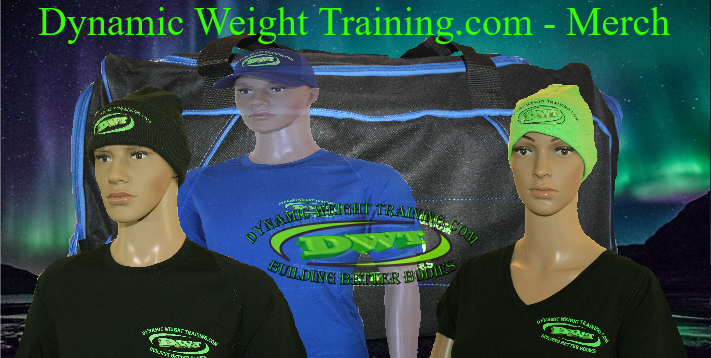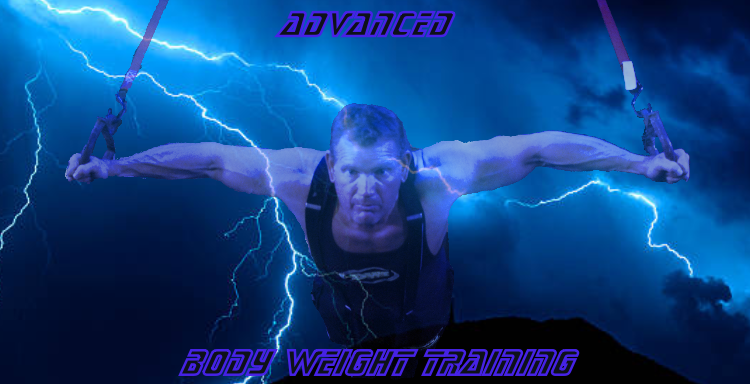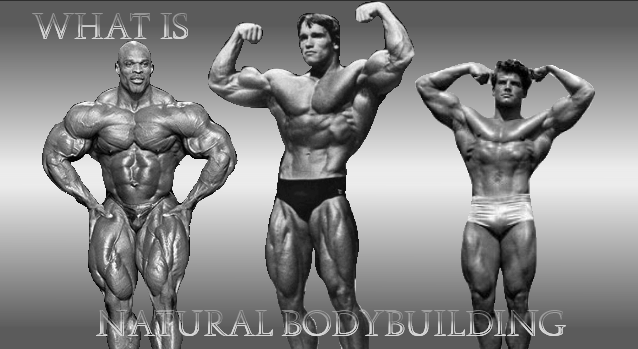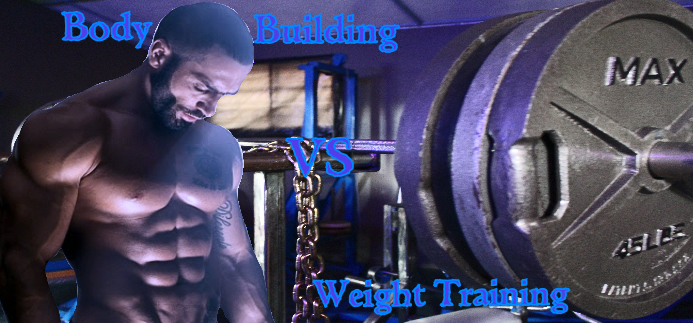Training Upper Back
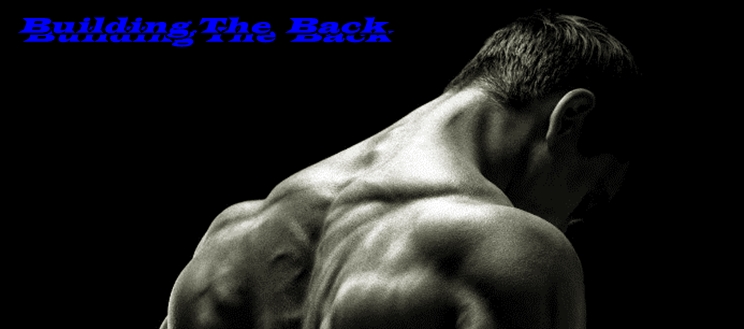
Training upper back, has its fair share neglected issues. Whether you’re standing on the stage, in front of the mirror or in public; a wide back gets noticed.
Hands down this is the biggest of the upper body muscle groups, if it’s fully developed? Sadly… it is generally one of the most neglected! Reasons can range from physical, psychological including a lack of understanding as how to train this unique muscle group.
This article will take you on an adventure of discovering your upper back. How to prioritize, develop and shape it, while looking at different training angles, strengths and weaknesses of back training, including how to mentally connect and feel isolation and multi-joint exercises.
Training the upper back takes almost as much effort as leg training, no other compound upper body exercises even come close to how winded back training is capable of making you feel.
So what does a wide well-developed upper back add to your physic?… It epitomizes raw upper-body Size and Strength in all Men!
If I Can’t See My Upper Back, Should I Train It?
It is not uncommon to hear the guys in and out of the gym talk about chest training and how much they can bench press. But training upper back, and showing it off to your friends and hearing guys tell stories of how much weight they can use to perform bent over rows is seldom heard, or bragged about.
Training upper back with the same intensity that most
athletes put into chest or arm training, is rare. For the most part: it's difficult to see the hard work and effort that
goes into serious upper back training because of its obvious location.
The sad reality that gets missed with this giant muscle group’s lack of understanding in weight training is: bodybuilders and weightlifters in the earlier years have a tough time actually feeling the exercise movements there performing.
So... let's put training upper back under the Dynamic Weight Training microscope: starting with how to build size, thickness width and shape into the upper back. The sweat, intensity and passion to develop this muscle group... will be left up to you!
Muscles of the Upper Back and Their Exercise Function.
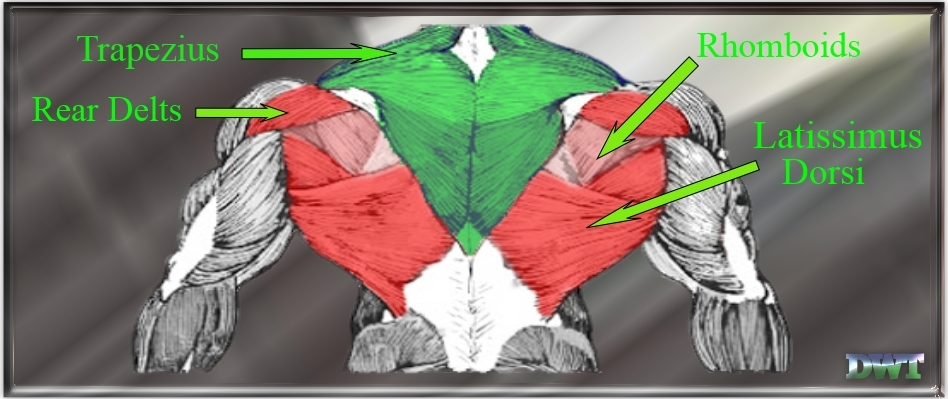
So what types of exercises do what for the upper back
Lets take some of the mystery out of training upper back by, first: looking at back exercises and their movements to get a better idea of what exercises give you which results.
Ø Pull-ups, Chinning and Pull-downs
These types of exercises excite and stimulate the widest part of the lats these movements are responsible for building upper back width, shape and detail. But...
Just having upper back width doesn’t mean you have a thick, muscular looking upper back. For that you need different exercises at different intensities.
Ø Barbell and Dumbbell Rows, Dead lifting and Cable Rows:
These types of basic movements are generally not as fun to perform as isolation exercises as your training upper back but...
these exercises build size, thickness and muscularity in the upper back. Because rowing exercises are used to develop strength. Consistently with tight form while maintaining a progressive attitude with resistance... (brings the training model and your upper back development together).

Note: focus your efforts of strength and thickness-based compound movements like rowing exercises, towards the start of the workout when energy levels are at their highest; this includes bodyweight chinning.
Rowing movements are the workhorse exercises that build raw upper back strength and thickness!
Using a top down approach, meaning: start with the big rowing exercises or chinning for the Lat muscles first: then as energy levels begin to deplete throughout the workouts duration, focus exercise emphasis on the Traps, Lower back and Spine.
Multi-joint Exercises to Develop Raw Strength and Thickness
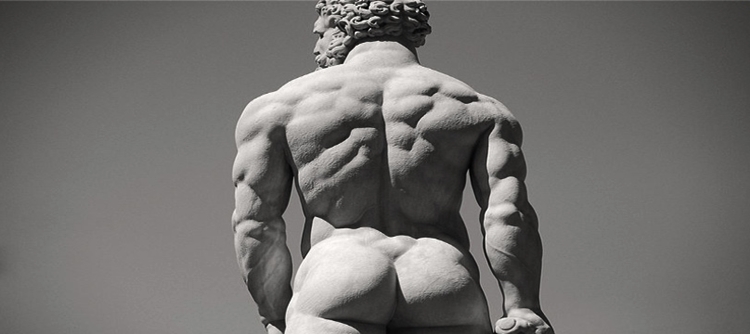
Performing compound, exercises are demanding but, history has shown; these types of movements as taxing as they are, hands down win the day!
These exercises stimulate the entire upper body; with these big exercise movements comes the big benefit of: more growth hormone being released through the exerted contracted effort that these exercises demand!
As mentioned: the back is a large muscle group and it’s muscle diversity and complexity is equally as big. I can’t stress enough how important it is to always take this muscle group through a full range of motion (FROM), on each exercise.
Varying your grip, wrist and hand position on different exercises each training day.
The upper back also needs variety in training exercises, (Which we'll be going into further down).
While continually changing exercise variety in the routine will keep the back muscles guessing, It’s up to you to provoke (growth response); Just because you can’t see the back- doesn’t mean you can’t develop it.
Always warm-up and stretch before, training upper back!
These can be performed with regular LAT machine pull-down's, using half your regular working weight or performing dumbbell bent rows, a couple of sets of each will be sufficient to get the back, shoulders and arms warmed up as resistance and intensity increases through workout duration.

So let's have a look at some of the more tried-and-true rowing exercises you can perform to develop your upper backs strength, size and thickness. These exercise combinations and movements are old-school and timeless in their nature. But, their ability to be a effective.
After a short warm-up; lets start our day of upper back training with some T-Bar Rows
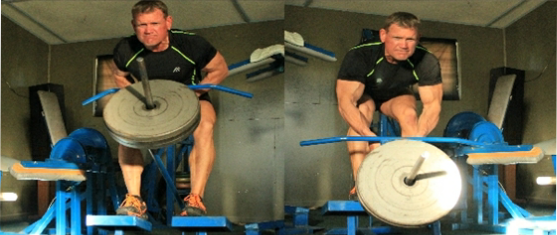
Ø T-bar rows: Sets 4 Reps 8 to 10, change hand and wrist positions each new workout. Lock the hips and legs back into a bent position, the trick on this exercise is: keep this bent position throughout the entire set. *Pyramid up, meaning: add resistance on each new set, challenge those back muscles.
Note: most exercises preformed in the bent over position may make you puff a little - this is normal - Just be sure to rest adequately between sets.
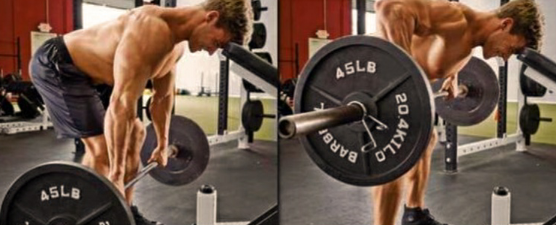
Ø Bent over barbell rows: Sets 4 Reps 10 to 12,*pyramid up with resistance on each set, as the resistance and intensity increases the final set should be at no more than 5 to 7 reps. Use a wider than shoulder width grip, the wider the grip the greater the stimulation becomes - in the outside of the lats.
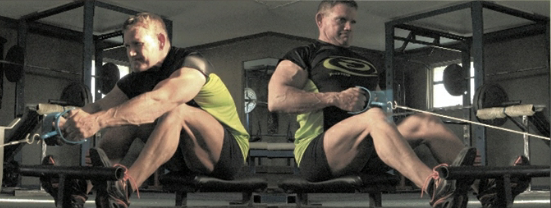
Ø Seated cable rows: Sets 3 to 4 Reps 10 to 12, attaining a deep stretch in the bottom end, pull out of the exercise keeping the shoulders back and forcing the chest out, will give you results.*Perform these as heavy as you can stand with good form. Then dump 20% of the resistance and perform one drop set. For each of the original 3 to 4 sets.
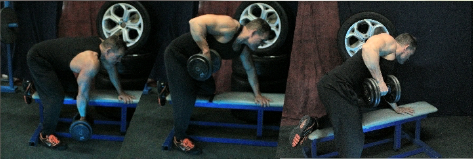
Ø One arm Dumbbell Rows: Sets 3 to 4 Reps 8 to 10, with opposite knee and hand resting on a bench, pull the weight up and back as far as you can, touching the sides of the ribs for a good contraction. Have the position of the dumbbell slightly under the bench in the bottom end to get a better stretch in the upper back,(*increase resistance as you progress in your sets), alternating hand position for each set.
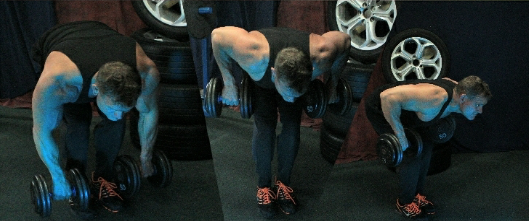
Ø Bent over dumbbell rows: Sets 4 Reps 8 to 10, keep resistance inline with the rep range - have dumbbell ends facing each other, palms to the rear. Focus on the muscles of the upper back, and your form. Pull them like you mean it, but try not to heave; pull the bells to the sides of your ribs allowing the arms to stretch in the bottom.
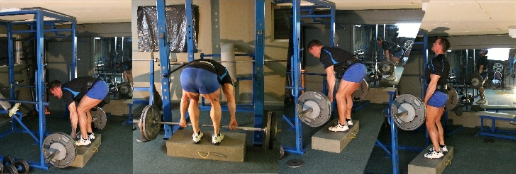
Ø Stiff legged Dead lifts: Sets 4 Reps 10 to 12, again on the big movements like dead lifts, increase the weight each set, as you get to your 4th set you should be somewhere around 5 - 7 or 8 rep range.
Big full body movements like the dead lifts are demanding. But always remember… Demanding dead lifts stimulate the release of growth hormone and not only force the back, but the entire body into new growth response.
Isolation Exercises to Develop Upper Back Width, Detail and Shape.

Isolation exercises in weight training/bodybuilding, definitely have their place, beginner's don't need to place as-much emphasis here. A lot of guys like to perform isolation exercises often because they are easier providing a fun factor, but…
Fun factor training doesn't always increase or yield muscle size and thickness like those of the big multi-joint, strength training exercises as listed above. Keep this in mind if you're a beginner performing isolation movements.
Note: I recommend using your mirror or have a trusted friend or training partner, girlfriend or spouse photograph you every 50 - 60 days or so, preferably when your back is pumped.
This is a great way to track progress and use isolation exercises to target and prioritize weaker areas in your back development.
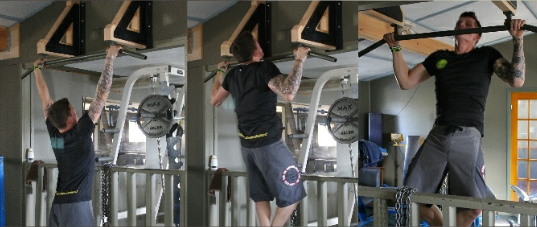
Ø Wide grip chins: Sets 3 to 4 Reps 8 to 10, not everyone early on in their career is strong enough to perform chins. If you’re not, perform wide grip Lat pull-downs, but… work at it! This is to increase strength for chinning.
Note: try to perform chins at the start of the work out when energy levels are at their highest.

Ø Wide grip cable pull-down’s Sets 4 Reps 10 to 12, palms facing each other: pull the bar down to the rear of the lower neck: pause momentarily and contract the back muscles at this point - releasing the bar to the starting point again.
*(After this set is complete, immediately perform one drop set removing 20 to 25% of the weight, this time pulling the weight to the front of the upper chest)
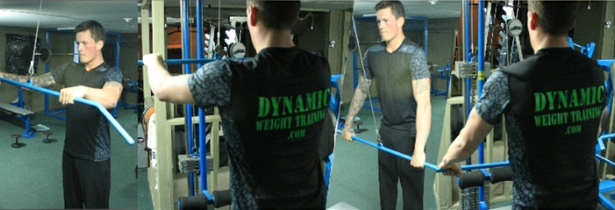
Ø Straight arm pulldowns: Sets 3 to 4 Reps 8 to 12, you don’t need a lot of weight with this exercise, simply choose enough working weight to get your 12 reps on the first set. By the time you get to your fourth set, you should be getting somewhere in the neighborhood of 7 to 9 reps.
(*pyramid up with the weight in small increments, don’t allow the intensity to take you off balance, stay focused on the muscle movement and your form).

Ø Barbell bent-arm pullover: Sets 3 to 4 Reps 8 to 12, as this exercise implies (bent arm); keep the elbows locked in a bent position to isolate the Lats, you should feel the stimulation close to the arm-pits; this also stimulates where the Lats tie in closer to the waist. The greater the stretch in the bottom as resistance is increased - this overall intensity adds to the benefits of this exercise.

Ø LAT pull down’s: Sets 4 Reps 10 to 12, LAT pull down’s have a tendency to be overvalued and overused. I do use, LAT pull down's usually… (sparingly), it’s easy to be lazy on this exercise, so don’t be.
Challenge yourself on cable machines the same as you would on free weights: using a wider than shoulder width, overhand grip, adjust the weight to get 10 or 12 reps, pulling the bar to the upper chest, keeping you’re back arched and chest forced out, pause and contract.
Rest times should be no more than 30 to 45 seconds, increase the resistance each set if you can; this will force a lot of blood into the outside of the back close to the armpit.
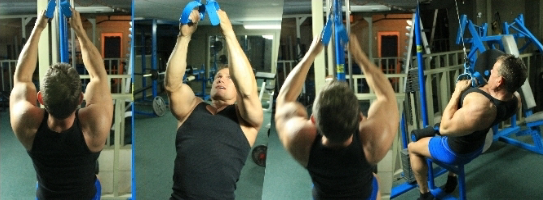
Ø Close grip pull-downs: Sets 3 to 4 reps 10 to 12, When it comes to performing cable pull-down movements keep in mind these isolate - so challenge yourself: pull like you mean it, and concentrate on the point of contraction.
This exercise is great for stimulating different areas of the upper back. The pull-down also heavily emphasizes the Biceps and Trapezius while stimulates the lats up higher as-well-as where they tie-in lower to the waist.
Training Upper Back: the Trapezius

The Trapezius is an extreme upper back muscle that can often get missed or even ignored out of any training stimulation. The fact is: the trapezius plays an intricate part in the full development of the upper back, taking up one-quarter of the upper back development landscape.
This muscle group also has some of the nicest contour and shape of the muscle groups faced to the rear of the physique. It fills in the middle of the back traveling from the upper rear delts and neck making its final insertions at the lower spine.
This is a large area and does deserve some effort, so let’s look at some of the best, trapezius exercises and how to perform them.
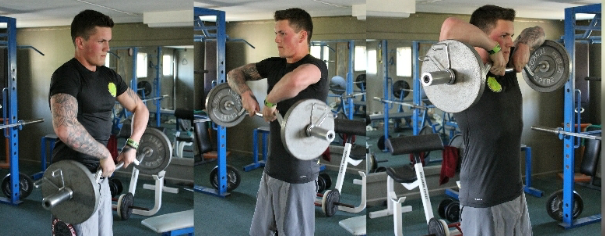
Ø E-Z BAR narrow grip upright rows: Sets 3 to 4 Reps 10 to 12, using an overhand grip, thumbs 4 to 6 inches apart. Pull the weight from your waist to the base of the neck, pause momentarily keeping your chin up; lower the weight under control, while trying to feel the traps flexing against the resistance as you lower.
(*Again, pyramid-up in your poundage, and your reps should decrease by one or two with each succeeding set).
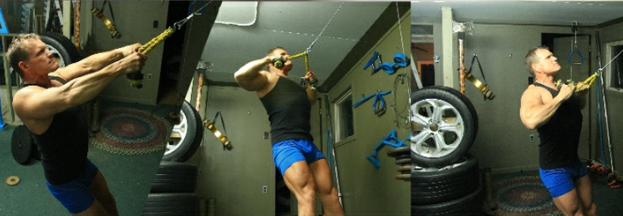
Ø Cable rope-pulls: Sets 3 to 4 Reps 10 to 12, choosing the right weight and leaning back to allow only the arms and back to do the pulling against the resistance.
Pull back with the ropes, aiming for the throat or upper chest; pause here for a moment and really flex the Trapezius before you release the weight. Adding weight on this movement is difficult, balance the weight with your own, and take shorter rests. I’ve shown 2 variations of (overhand and under), to increase development and variety.

Ø Dumbbell shrugs: Sets 4 Reps 8 to 10, Keeping the dumbbells at your sides, try to imagine raising your shoulders to touch your ears; it is crucial to get the shoulders as high as you can, to stimulate the traps.
Note: choosing enough resistance is important on all shrug movements, but a lot of guys simply choose too much; too much, just shortens the range of this already very short movement.
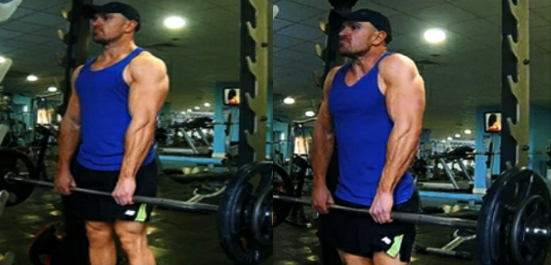
Ø Barbell shrugs: Sets 4 Reps 8 to 10, choosing a medium grip, (shoulder width apart), roll the shoulders up toward the ears as high as you can, then roll them down and back to the start position.
This exercises mechanics are simple, yet can often get preformed wrong; by, using to much resistance or not taking the time to feel the movement or both - thick trap development needs undivided attention and focus.
Connecting and Feeling Upper Back Movements
Building and training upper back to an impressive size you have to mentally visualize and connect to the muscles of the upper back, or all the training in the world will not make a wider thicker back.
If you find the upper back/trapezius are sadly lacking in comparison, choose the right exercises, resistance and connect with these movements will take your upper back development to the next level.
Make an effort to consciously feel each movement, while increasing resistance and intensity as new strength levels prevail: is how this large muscle group should to be approached.
Note: If you’re just beginning to get serious about training upper back, the best advice I can give is: start with a little less weight.
Work hard at the exercises and even harder at the feel of movement and form.
Training upper back is not easy

As with all things that are not
easy, comes many great benefits, even if we cannot always see the muscles
associated to the rear of our physiques, make no mistake; these, are some of
the strongest and most supportive muscles on the human body.
Without these powerful muscles bending over, pulling, lifting and supporting the physique, is all part of developing this area that makes many of life's tasks easier.
Training upper back has always had arguments thrown at it; as to which are the best exercises, including how many sets and reps to perform? This battle of opinions has raged on for decades and they probably always will. Just keep the intensity the same as you would training your arms or chest.
The exercises I’ve outlined here for you have worked well for myself and many others that I’ve trained with over the last 3 ½ decades: keep at it and your back will have know choice but to grow.
In summary:
Upper back training and development is not so much about the exercises or the routine that you put them into:
As mentioned: the back muscles are intricate and need training variety, below is a list of generalized terms and ideas for you to keep in mind as you embark your back training program!
Ø Variety: E.g., always alternate hand and wrist position, including the angle that you pull from.
Ø Intensity: whether you perform Dropsets, Supersets or Pyramid try to be progressive with your poundage.
Ø Prioritize: look at your back with photos or the mirror, assess what type of work your upper back training needs?
Ø Compound exercises: these build raw strength and upper back thickness.
Ø Isolation exercises: build detail, symmetry, width and shape.
Ø Full range of motion: a full stretch, pause and contraction with each rep adds greater fiber recruitment and builds deeper muscle bellies.
Ø Form: upper back muscles are intricate; form, therefore is paramount for maximum stimulation.
Ø Mind and movement connection: it took me over one calendar year when I was beginning, to be able to feel my upper back from these exercises. Be persistent, give yourself time and be patient and this connection will happen.
Because we can't see the upper back it does have a tendency to get neglected as far as training goes . Anyone who has brought their upper back development up to par with the chest and arms: will easily be able to see their upper back from the front. So...
it's up to you - all the talk, great diet and training strategies and schedules mean little, unless you put these into practice! The sweat, dedication, persistent intensity with a good diet, variety and training form, I leave to you!
If you bring all of these elements into your upper back training, your shirt size is going to increase! Thanks for stopping by, I hope training upper back has helped out.
DWT.

